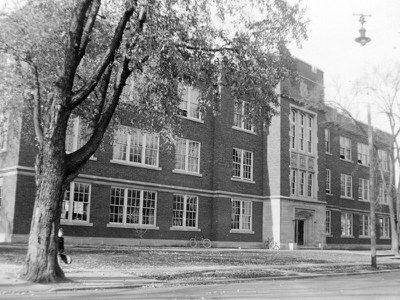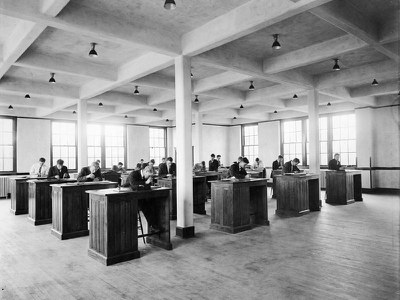Harrington Hall
Name
Harrington Hall was first named the Industrial Education Building in 1912 (also called the Industrial Arts Building or simply, the Industrial Building). After the Industrial Arts department was eliminated in 1937, the building was renamed the Science Building and was outfitted to support chemistry, biology, physics and geology courses. On February 7, 1952 the Board of Regents passed a resolution to rename the building Harrington Hall in honor of Regent John Harrington. The same resolution also approved the renaming of other campus buildings: Dempsey Hall, Radford Hall, Oviatt House and Pollock House.
Namesake: John Harrington
Mr. Harrington was the local Regent to the Wisconsin Board of Regents of Normal Schools from 1904-1914. It was under Regent Harrington’s watch that the building was constructed.
Facts
Completion Date: 1913
Cost: $80,000.00
Renovation Dates: 1937, 1947, 1964 - Cost: $305, 000
Original Purpose of Building: The manual (industrial arts) training division of the Oshkosh Normal School. The building later housed various science departments.
Current Use: Presently, Harrington Hall houses the geology and anthropology departments and their classrooms, labs, and collection storage.
History
In the early part of the 20th century, there was a growing belief that industrial education needed a larger role in U.S. education and the Oshkosh Normal School responded by adding courses to prepare teachers for this new expanding discipline. Originally handicrafts such as basketry, sheet metals, book binding and carving were taught. In 1909, Richard Gruenhagen expanded the offerings to include cabinet making for which he was well known in Oshkosh. Industrial Education became an official Department in the school in 1912 with a building of its own and a new director, Hans Schmidt. Schmidt's leadership and innovation at Oshkosh later earned him the position of State Superintendent of Industrial Arts.
In the 1920s, the Oshkosh Normal School helped to fulfill the growing need for industrial arts educators through the expansion of the program. The students, most, if not all, of them men and many of them World War I veterans, learned to produce wonderful pieces of furniture as well as discover the secrets of foundry work, mechanical drawing and machine shops. At the same time, these students learned pedagogical methods and took their skills, in practice, to the upper grades of the city's schools. The influx of male students at Oshkosh Normal School greatly enhanced the social life of the school as well as its athletic teams.
As the 1920s moved into the 1930s, the demand for industrial arts teachers began to diminish. Meanwhile the Stout Institute, now in state hands, strengthened its position as the leading manual training facility in Wisconsin, drawing many students away. Ultimately, in 1937, the Board of Regents closed Oshkosh Normal’s industrial arts program due to shrinking enrollments. The Industrial Building began a new life as classrooms for science instruction. In 1947, war surplus materials from an ordnance plant in Illiopolis, IL were purchased to add on a chemistry laboratory to the building.
In 1964, after the opening of the Halsey Science Center, Harrington was renovated for the geography and geology programs.
Photos

John Harrington

Harrington Hall circa 1935.

Students drafting in the applied design studio.

The foundry allowed students to explore many avenues of the industrial arts.

Men labor over ornate furniture in the elementary bench shop.

